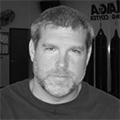In Krav Maga, Effort Must be Directed and Well Planned to Yield Results.
I’ve noticed that Krav Maga students often see the Krav Maga system and/or Krav Maga technique as something to be wrestled to ground or to be beaten into submission. But, in this subtle attitude, we forget that the Krav Maga system was designed to be forgiving and user friendly.
In fact, I’m confident, after many years of teaching students that too much effort is usually a hindarance. Often times, in Krav Maga as in life, we can be our own worst enemy.
Misdirected effort can be a disaster for Krav Maga trainees. Usually because this misdirected effort is nearly 100 percent physical. Your return on effort (ROE) should be measured by progress over some period of time. Effort, however, is as much mental as it is physical. During training, I encourage my students to think through the technique before moving, to move slowly during dry work to feel the salient movements in techniques, and to start slowly during partner work.
If you believed that for every improper repetition you completed, you’d need to complete three more repetitions to erase or otherwise fix the improper movement you initially completed, I’d venture to guess you would slow down in your training before speeding up! Data suggests reversing a motor skill takes 2-3 times longer to achieve than simply learning a motor skill the proper way.
As a rule, I preach these two axioms to my students and instructors:
- IT’S ALWAYS LESS – the movement or technique you’re learning is more compact and more efficient than you think it is. If the technique required huge movements, more strength, and early intervention, the technique wouldn’t be very effective.
- LET IT BE EASY – the Krav Maga system was designed to be accessible to nearly everyone, this is men and women, short and tall, big and small. That means, the technique does not require anything extraordinary from you. Don’t make something that can be easy (relatively speaking) be hard.
As you move forward with your training, adopt a method of assessing, testing, refining, and re-testing new techniques on the mats. Approach every technique with the confidence that it was designed for you, because in a very real way, it was. Finally, keep track of your progress and increase your RETURN ON EFFORT.




